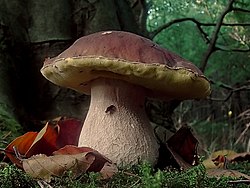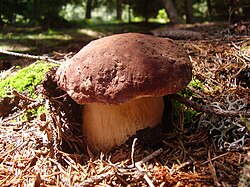This article needs additional citations for verification .(June 2024) |
The following is an incomplete list of species of the mushroom genus Boletus . The genus has a widespread distribution and contains about 300 species. [1] However, the genus is polyphyletic, and approximately only 10 percent of the described species are actually members of the Boletus sensu stricto clade (Singer's Boletus section Boletus, also known as the "Porcini Clade"). [2] [3] [4]
Contents




